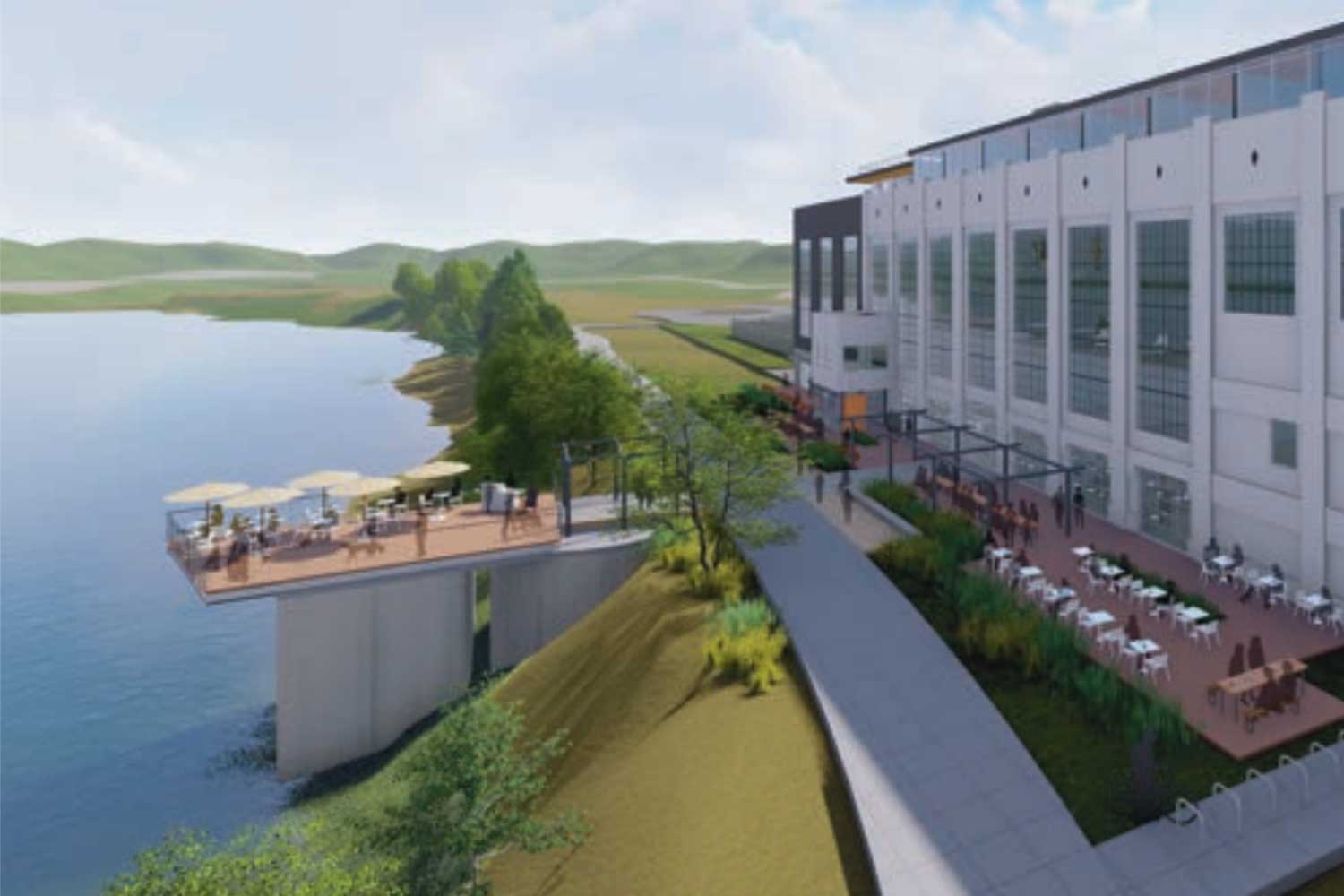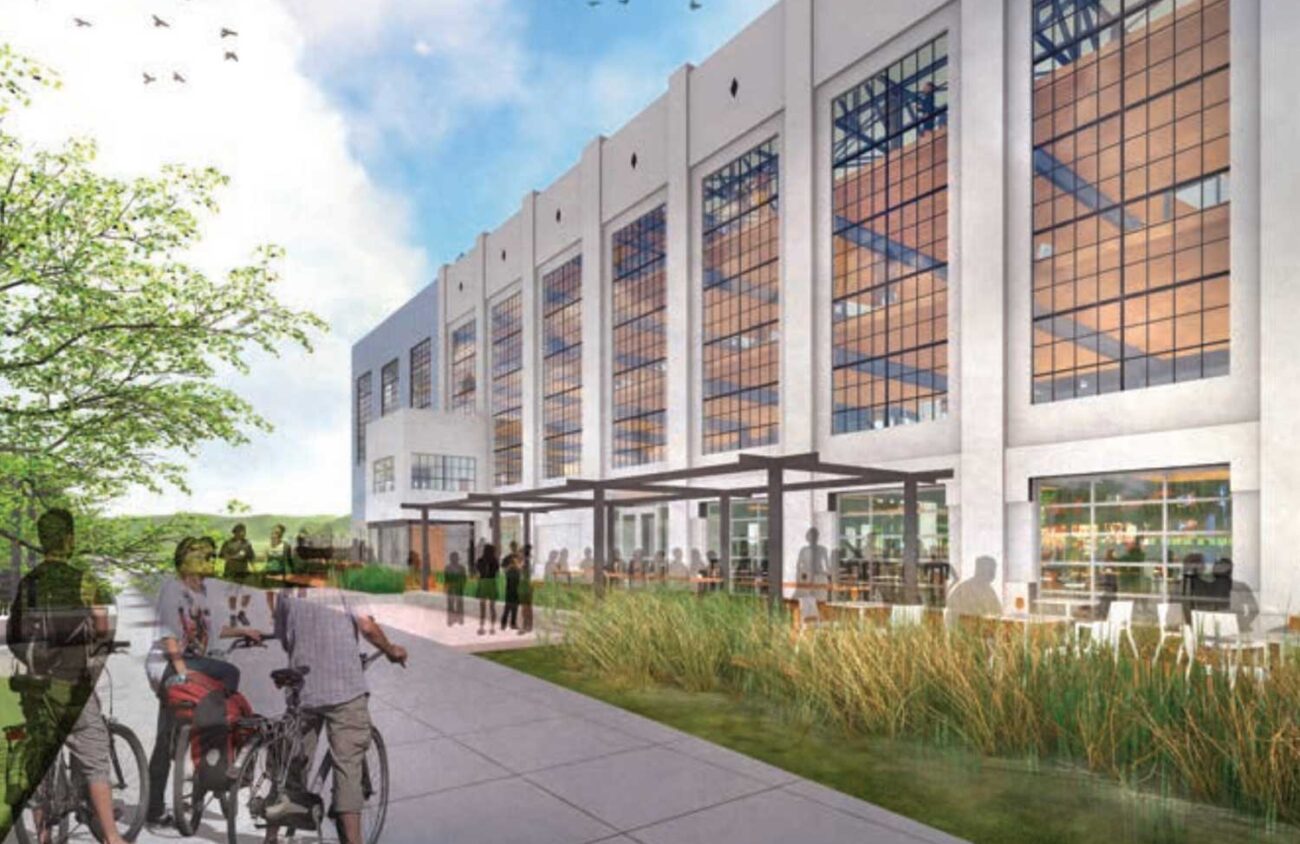The Eugene City Council is putting together a development agreement on the refurbishment of the iconic riverfront Eugene Water and Electric Board Steam Plant. Key components include preserving the state of the building and its artifacts while incorporating them into the design, creating a public performance space, independent hotel and office spaces and rooftop bar with a view of the river.
The historic Steam Plant was sold to Dream Plant LLC for $1 in February 2022.
“There is a lot of alignment between what the community wants and what we’re trying to achieve,” says Mark Miksis of deChase Miksis, the Northwest company leading the Dream Plant development team.
According to Miksis, there will be a year of predevelopment before Dream Plant can start construction in fall 2025. The project will take up to two years to complete and developers hope for a grand opening in 2027.
On April 24, the Eugene City Council — acting as the Urban Renewal Agency Board — voted to approve funding an additional $6 million to Dream Plant LLC in the redevelopment of the decommissioned Steam Plant, closing an existing financial gap.
Funding for the Riverfront Urban Renewal District stems from tax increment financing.

The URB had previously approved paying for the development charges, permit fees and asbestos abatement prior to the April meeting, bringing the total investment to $7.8 million.
“We’re committed to making this project move forward. And again, we are working with a team to make sure it’s achieving a lot of the goals that we’ve heard from the community, and so preserving the historic character of the building is going to get listed on the National Register,” says Amanda D’Souza, Eugene City Council development programs manager.
Dream Plant now enters a development agreement with the URB outlining expectations, including deadlines, building stabilization, engineering initiatives and what historic preservation work is entailed in order to list the building on the National Historic Register.
Construction to revamp the Steam Plant into a multifaceted building comprising a hotel, ground floor performance venue, a rooftop bar, offices and a restaurant has to start within the next two years and will take 18 months to complete.
Preserving an iconic industrial powerhouse is no simple feat. The 1930s Steam Plant was not built with consideration of modern fire or energy codes, and it does not provide access for wheelchairs or to the roof, according to Will Dowdy, community development director.
Coming out of the pandemic in 2022, the project was facing a $5.6 million financial gap and there was less than $2 million in allocated urban renewal funds. Neither the state Legislature nor urban renewal funding were able to fill the financial gap.
Dowdy said at the April meeting that the development team would be covering 87 percent of the total $60 million cost.
In January 2024, the URB passed an amendment to raise the spending limit for the Riverfront Urban Renewal District and also extended the district time period, allowing the agency board to provide more financial aid for this project.
Currently, the Steam Plant isn’t generating any property taxes, but that will change once the building is transformed into an urban hub of thriving commerce, D’Souza says.
Since purchasing the Steam Plant from EWEB in April 2018, Eugene city councilors have had high hopes of transforming the 16 acres of downtown riverfront property into a sprawling urban center while simultaneously preserving a symbol of Eugene’s industrial past, Dowdy said at the April meeting.
The 3-acre downtown Riverfront Park, which opened in June 2022, will enter phase 2 of construction, beginning this summer. The Eugene City Hall has moved to the old EWEB headquarters on the riverfront property. And on June 13, Heartwood Apartments opened its doors, marking the first of six residential buildings to arrive in the Riverfront District. The modern complex is four stories and offers 95 units. “Portal,” the second residential complex, started construction in 2023 and will be completed in 2025.
“I think one of the things people were adamant about was they wanted it to be accessible to the community,” D’Souza says.
D’Souza says this is a milestone for the city and is another step in reconnecting the university and downtown to the Willamette River. According to deChase Miksis’ presentation to the City Council, the Steam Plant is Eugene’s closest building to the Willamette River.
